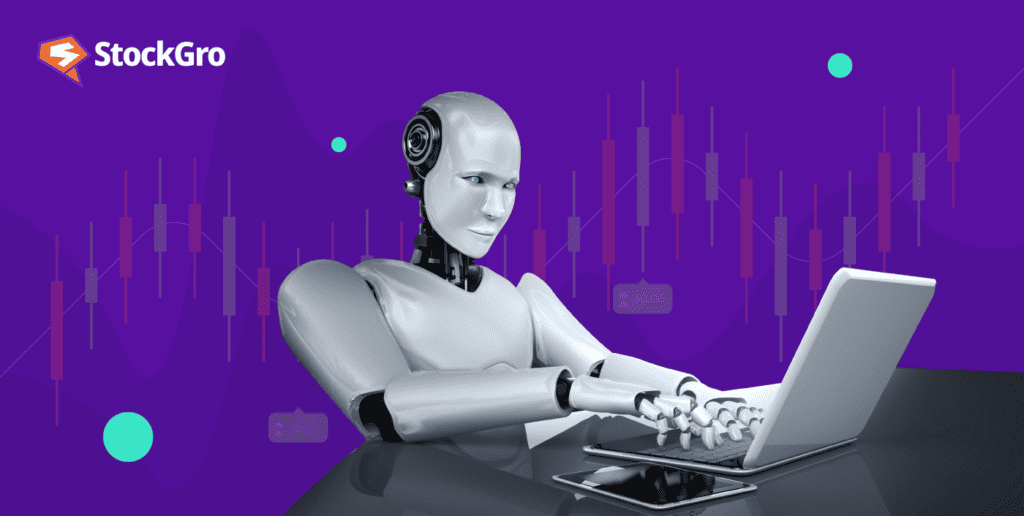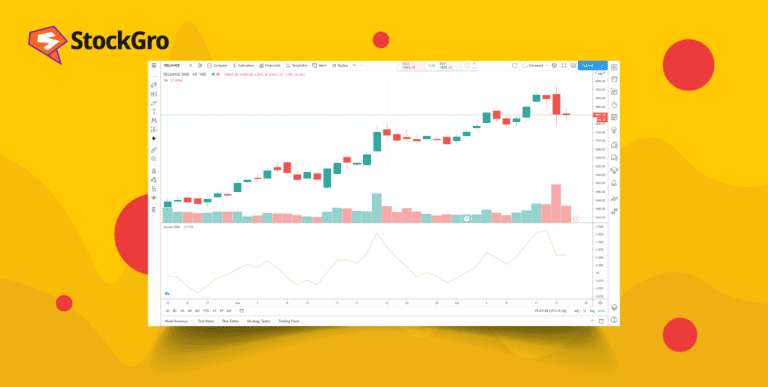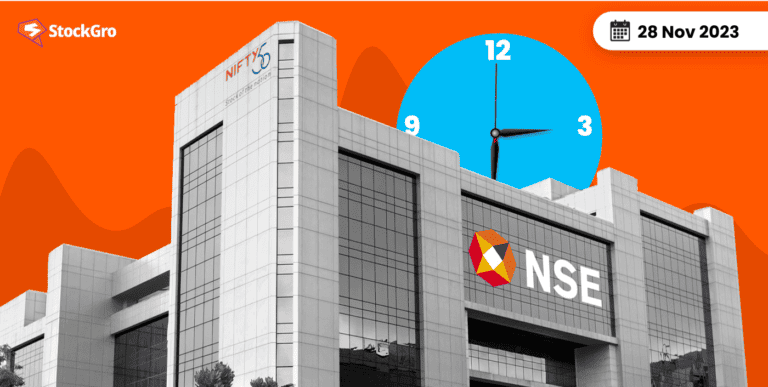
Just like any other skill, trading in the stock markets is almost always about the right timing and consistent practice. Monitoring stocks in smaller time frames can be time-consuming and requires a lot of patience. There is a high chance that you might miss out on the opportunity to place your order when the time is right. Hence, as an answer to this problem came algo trading, where traders leveraged tech solutions to implement strategies that enabled the buying/selling of shares at the right time.
What is algo trading?
Algorithmic trading is also known as algo trading. It uses coding programs to implement trading strategies. These algorithms can scrutinise market data, detect trading prospects and execute orders at speeds beyond the reach of human traders. The primary goals of algo trading are to optimise trading efficiency, minimise human errors and leverage market inefficiencies for maximum returns.
For instance, consider a trader who follows these straightforward trading rules:
- Purchase 100 shares of a stock when its 44-day simple moving average crosses a green candlestick.
- Make a sale of 100 shares of a stock when its 44-day simple moving average falls below a red candlestick.
You may also like: A comprehensive guide to reversal candlestick patterns
With these two simple guidelines in place, a computer program can be created to autonomously monitor the stock’s price along with the moving average indicators,
The orders get executed once the criteria are met. This process eliminates the need for manual intervention, relieving the trader from continuously monitoring live prices and charts or manually placing orders. The algorithm efficiently handles these tasks on the trader’s behalf.
Recently, India has experienced a substantial increase in algo trading, revolutionising how participants interact with the Indian stock market.
Within the Indian stock market, algo trading includes a diverse range of strategies like trend following on support & resistance, statistical arbitrage, index pricing and more. Traders and institutions employ these strategies to execute trades with rapid automation, frequently within milliseconds or microseconds.
Algo trading strategies
Trend following:
This strategy involves using technical analysis indicators like moving averages, trend lines, and oscillators to make decisions about when to enter, the position size, and when to exit. It is crucial to incorporate risk management alongside trend-following strategies, typically by implementing stop-loss orders to limit potential losses in case the trade deviates from the expected trend or by setting parameters to secure profits at desired levels.
Arbitrage:
The arbitrage strategy revolves around capitalising on price differences in dual-listed securities or those traded in the futures market. These algorithms are designed to identify opportunities and execute high-speed trades. This ensures that the computer buys at a lower price and sells at a higher price simultaneously. However, with an increasing number of traders adopting algorithmic platforms, arbitrage opportunities tend to vanish quickly, making speed a critical factor.
Mean reversion:
Share prices tend to follow a support or a resistance level. Algo traders employ mathematical models and historical data to calculate support and resistance levels, which are then integrated into their algorithms. As a stock moves out of this predetermined range, the computer automatically executes a trade to either purchase or sell the stock. The expectation is that the stock will eventually come back to these levels.
Position sizing:
Position sizing in algo trading is a critical element determining the number of assets or contracts to be traded in a given strategy. It aims to balance risk and reward, ensuring that a trader allocates capital optimally.
Accurately determining each trade’s size helps traders manage risk and maintain consistent returns, thereby enhancing the overall effectiveness of algorithmic trading strategies.
Volume-weighted average price:
Volume-weighted average Price (VWAP) is a strategy designed around a predetermined schedule to execute large orders with the goal of minimising any adverse effects on market prices. This strategy provides valuable insights into market trends and price efficiency and aids traders in making well-informed trading decisions.
Time-weighted average price:
The Time-Weighted Average Price (TWAP) strategy involves breaking a large order into smaller portions and timing their execution to achieve an average price closest to the historical TWAP. This approach aims to evenly distribute the order over different time intervals for a more uniform execution.
Also Read: How to compare stocks? Explore the various tools available.
Benefits and drawbacks of algo trading
On the positive side, institutional investors and large brokerage firms use algorithmic trading to reduce trading costs, particularly for large order volumes. Market makers also frequently use algorithmic trades to enhance liquidity.
Algo trading is highly profitable when it comes to saving time and effort. However, it is led by the emotions of the person who’s set up the strategy. Here’s what the CEO of Zerodha had to say about algorithmic trading:
“While an algo doesn’t have emotions, it is only as good as the person who wrote it or controls (start & stop) it—the same person who’s riddled with fear and greed. Every algo, like any trader, strategy or stock, has ups & downs. Just like impatient discretionary traders constantly try to time entry & exit, getting in late & out early, trade against trends, the same happens with algo traders trying to constantly find the best algo as well,”
Algorithmic trading facilitates swift and efficient order execution. This execution allows traders and investors to capitalise on minor price fluctuations, making it particularly suited for the scalping trading strategy which entails rapid buy and sell actions at small price increments.
The remarkable speed of order execution, while advantageous in typical situations, can become problematic when multiple orders are executed simultaneously without human oversight. The famous flash crash of 2010 was attributed to such algorithmic trading activities.
A notable downside of algorithmic trades is the risk of swiftly disappearing liquidity, a consequence of rapid buying and selling actions. This phenomenon can eliminate the opportunity for traders to profit from price shifts and may lead to instant liquidity loss.
Also Read: How to pick winning stocks with quantitative analysis: A beginner’s guide
Bottomline
Nevertheless, as prudent investors, we must understand the associated risks and obstacles. These include the potential for system failures, network connectivity issues, and delays between order placement and execution. There is a high chance of the existence of imperfect algorithms, which can lead to huge losses.
It’s vital to keep in mind that if you can execute a trade generated by an algorithm, so can other market participants. Consequently, prices fluctuate rapidly, often within milliseconds or microseconds. The complexity of an algorithm demands rigorous backtesting before it is deployed in actual trading scenarios.
If you wish to begin your journey with algo trading, ensure you have the necessary computer hardware, programming proficiency, and a background in financial markets.

